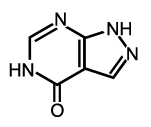The author of this report has found amebas of the genus Naegleria in synovial tissue and other tissues of patients with rheumatoid disease. These amebas have also been found to a lesser extent in tissues of healthy humans. Treatment of active rheumatoid disease with any of various antiamebic drugs (such as metronidazole, clotrimazole, or tinidazole) typically resulted in remission of the disease, both in the joints and in other affected tissues. Remission was sometimes preceded by a temporary exacerbation of symptoms (Herxheimer reaction). Based on these observations, the author concluded that Naegleria may be a source of constant antigenic stimulation in people who are genetically susceptible to the organism, and that the presence of this ameba in affected tissues is the cause of many cases of rheumatoid disease.
Comment: Although it is well known that certain types of infections or parasitic infestations can cause a "reactive arthritis" that mimics rheumatoid disease, the idea that infection is a common cause of rheumatoid disease is not accepted in the general medical community. Some investigators have argued that what Wyburn-Mason thought were amebas in various tissues were really just macrophages.
I have used metronidazole or other antiamebic drugs in approximately 40 patients who suffered from rheumatoid arthritis, psoriatic arthritis, or ankylosing spondylitis. In approximately one-third of these cases, the response was dramatic and long-lasting. One man had a 10-year history of moderately severe psoriatic arthritis that rarely fluctuated in severity. Within 5 days of starting anti-amebic treatment, his arthritic symptoms disappeared and did not return over a 5-year follow-up period. Because metronidazole therapy is not without risk, I usually reserve this treatment for patients who have not responded adequately to an allergy-elimination diet and other natural remedies.
Other doctors have used a combination of metronidazole and allopurinol, because allopurinol is said to interfere with the enzyme systems of the ameba. The reported success rates with that approach are higher than what I have seen using metronidazole alone. Additional information on anti-amebic therapy is available at http://www.garynull.com/documents/arthritis/antiamoebic_treatment.htm.
Other investigators have had some success using tetracycline or minocycline to treat rheumatoid arthritis. That treatment is based on the theory that the disease is caused by a mycoplasma infection.
Wyburn-Mason R. The Naeglerial causation of rheumatoid disease and many human cancers: a new concept in medicine. Med Hypotheses 1979;5:1237-1249.
COPYRIGHT 2005 The Townsend Letter Group
COPYRIGHT 2005 Gale Group



